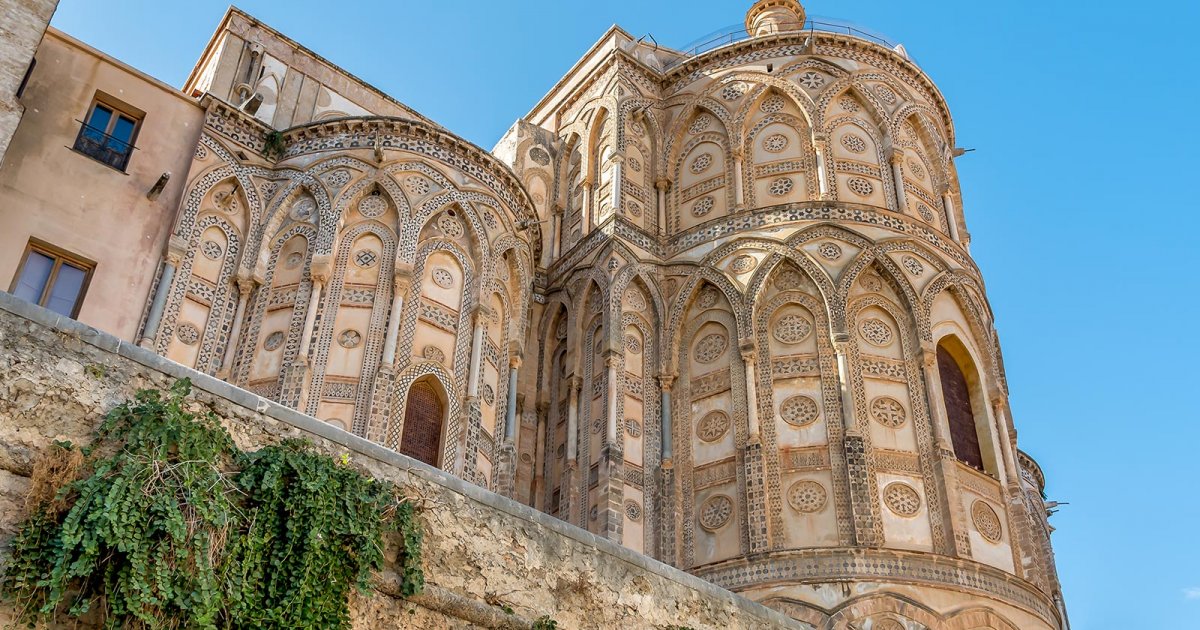MONREALE CATHEDRAL, Exterior Smaller Portal And Apse
 Language: English / USA
Language: English / USA
At the beginning of the left side of the cathedral, there is an elegant sixteenth-century portal, under which there is a smaller door commonly used as a way into the church. This door also has bronze panels applied on wooden casements, and was crafted by Barisano da Trani between 1186 and 1190. It is divided into 28 squares and was made using a technique more similar to goldsmithing than sculpture. If you’ve already seen the door on the facade, it’ll be easy to compare the two works: Bonanno had a profound interest in expressing human sentiments, despite the concise artistic expression, while Barisano’s work, although he sometimes used the same shapes, is more superficial and decorative, more rigid and less fanciful. On one of the squares are the Latin words Barisanus Tranensis me fecit, meaning “made by Barisano from Trani”, and it shows a self-portrait of the artist kneeling at the feet of one of the saints.
Now press pause and move to the back of the Cathedral.
What you’re looking at is the most extraordinary architectural creation of the Norman period, a marvelous combination of magnificence, beauty, power and elegance. You can admire three apses closely connected with one another by an exquisite pattern of intersecting arches, where the clearly Arab-inspired rhythm and airy lightness offer a beautifully elegant counterpoint to the austere Norman architecture. The addition of inlays and geometrical designs in limestone and lava stone, and the sophisticated use of small marble columns to support the arches, bring extra vibrancy and color to the whole, while the slender, upward projection is intersected by numerous horizontal elements.
An interesting fact: according to one of the numerous legends, the architect of Monreale Cathedral was said to be the brother of the architect that during the same years was building the Cathedral of Palermo, although the names of both are actually unknown. The competition between the two brothers to build the most beautiful cathedral is said to have ended in tragedy, with each taking their own lives: the first defeated by the beauty of the exterior of Palermo Cathedral and the second because he was unable to compete with the splendid interior of Monreale Cathedral. As you will have realized, the story of the brothers is but a legend designed to illustrate the antagonism that did indeed exist between the two figures who commissioned the two magnificent cathedrals: the absolute monarch William II, and the archbishop Walter Ophamil, who represented the power of the Church. What is certain is that they are both true masterpieces!



